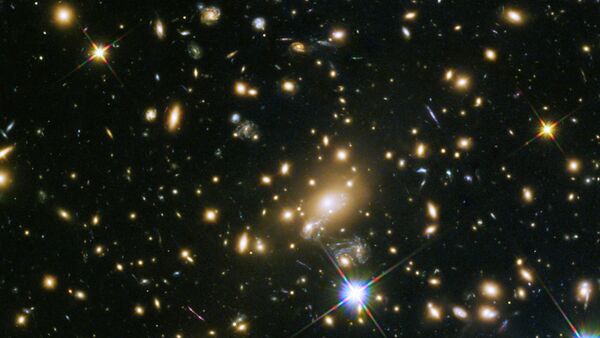Galaxies, already incomprehensibly huge, tend to flock together in what astronomers call "galaxy clusters." One such cluster, ACT-CLJ0102-4915, was discovered back in 2012, and it is big. Like, space-scale big. Its mass is calculated to be 3 million billion times the mass of the sun. That's right — it's six zeroes and nine more. And most of it seems to be dark matter.
The 2014 imagery by Hubble told astronomers that the galaxy cluster, located 7 billion light years away, is actually two large clusters that are colliding at a speed of millions of kilometers per hour. Studying the imagery, the scientists have come to the conclusion that the cluster's normal matter — largely composed of hot gas that is bright in the x-ray spectrum — is being torn away from the cluster's dark matter. Curiously, the hot gas is being slowed down by the collision while the dark matter seems to just keep going through unimpeded.
Hubble Weighs in on Mass of Three Million Billion Suns — "El Gordo" is actually composed of two galaxy clusters colliding at millions of kilometers per hour | Credit: @esa / @HubbleTelescope & @NASA, RELICS https://t.co/qlhlULalRR pic.twitter.com/kIUXDJGvrg
— The SETI Institute (@SETIInstitute) 17 января 2018 г.
This year's image, posted on NASA's website, was taken by Hubble's Advanced Camera for Surveys and Wide-Field Camera 3, as a part of the RELICS (Reionization Lensing Cluster Survey) program, which aims to find and mark galaxy clusters for the coming James Webb space telescope to study, NASA reports on its website.


